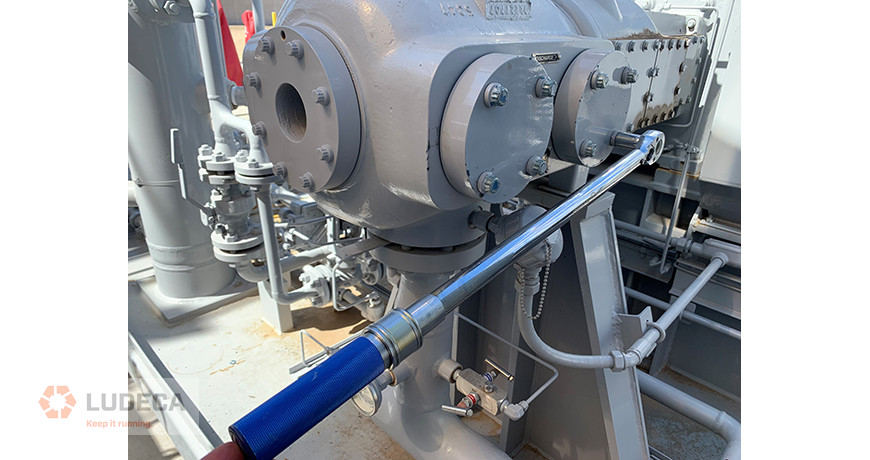
The automotive industry has had a bout with torque related issues recently. This has included over and under torqued items that have lead to failures and even deaths. We see torque related issues constantly in manufacturing facility root cause analysis. Bearing with reduced clearances, life due to over tightening of the housings, loose components due to improper bolt type, and complete disregard for torque specifications are just a couple of recent examples. Part of the solution is proper use of a torque wrench. A torque wrench is a precision instrument designed to apply a specific amount of force to a fastener. Whether tightening head bolts on a small block V-8 engine, lugs for tire and wheel installation, or inspecting fastener tolerances on high-performance equipment, it is extremely important that proper care is used. Guidelines are typically provided noting acceptable torque ranges, the order in which specific fasteners are tightened, and the number of times a fastener must be tightened and loosened to ensure uniform torque application. You must also be mindful of the presence of thread lubricants and the age of the bolt or fastener being used as these affect the torque required. Failure to properly torque fasteners can lead to equipment damage, personal injury, or worse. To help you prevent torque problems in your facility I have collected a few tips for your use. For visual learners, watch How To Use a Torque Wrench.
It is important to follow acceptable safety, maintenance, and use practices, such as:
- Always follow the manufacturer’s directions regarding torque direction, proper force, torque pattern/sequence, use or non-use of lubrication on fasteners, and torque “tighten/release” cycles.
- Do not exceed the recommended working range of the torque wrench. Reliable measurements are based on a percentage of the working range. In general, most mechanical wrenches have a useable range from 20% to 100% of full scale. Most electronic wrenches have a useable range from 10% to 100% of full scale.
- Do not use handle extensions or torque multipliers/cheater bars as we called them unless specifically allowed by the torque wrench manufacturer.
- If you have a torque wrench calibration/verification stand, test the wrench prior to each use.
- Always inspect the tool and check for worn or cracked sockets. Properly lubricate and replace worn parts.
- Avoid dropping or sliding a torque wrench. Dropping a torque wrench on a hard surface can cause the instrument to lose reliable calibration. If you suspect that a wrench has been dropped, have the tool inspected by the manufacturer or reputable calibration service.
- Always store a torque wrench in a protective case and/or location when not in use.
- Avoid exposure to temperature extremes, high humidity, fluid immersion, and corrosive environments. That means do not put them in the parts washer.
- If using a click-type torque wrench, always store it at the lowest level on the scale.
- Avoid marking, etching, or placing labels on torque wrenches.
- Use a torque wrench to apply a specific torque value during the final assembly process. Do not use a torque wrench as the primary means of tightening or loosening fasteners.
- As most torque wrenches are length specific, always grasp the torque wrench in the center of the handle. If two hands need to be used, place one hand on top of the other.
- Apply torque in a slow, methodical manner, and avoid sudden, “jerking” movements.
- When the wrench signals (by clicking, beeping or lights) that a specific torque has been reached, stop pulling immediately.
- After 5,000 cycles or up to one year of use, whichever comes first, have your torque wrench inspected and re-calibrated by the manufacturer or reputable calibration service.
Precision maintenance is key to eliminating your infant mortality and reoccurring failures. A systematic torque application program can get you on your way.
Thank you Shon Isenhour with Eruditio LLC for sharing these useful tips with us!
Filed under:
Maintenance Tips by Diana Pereda
